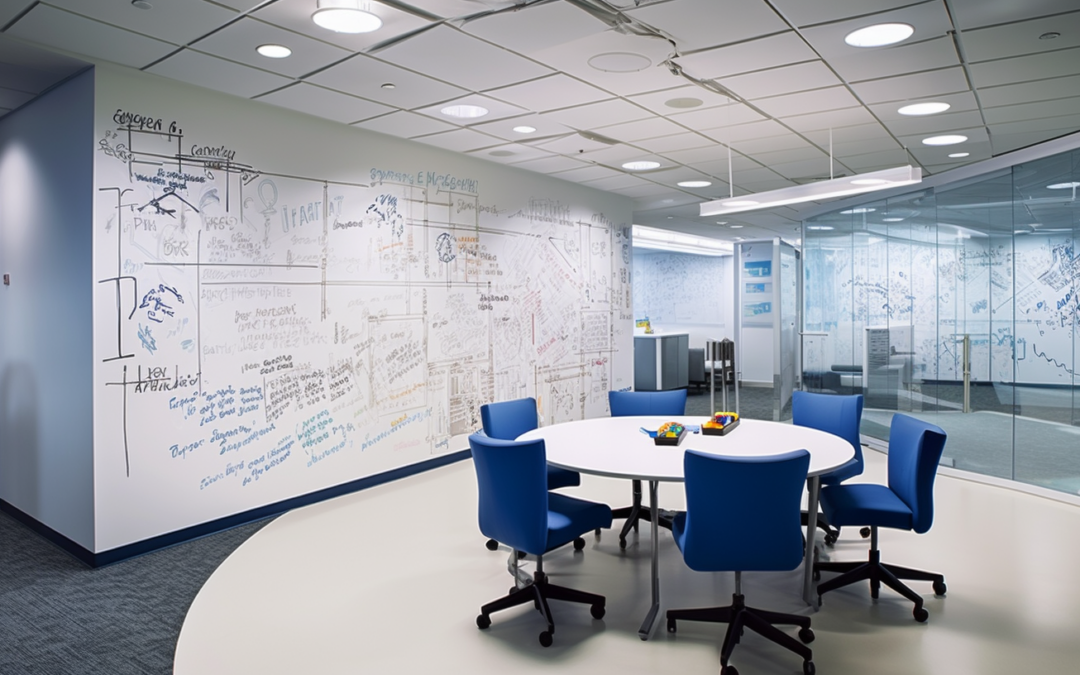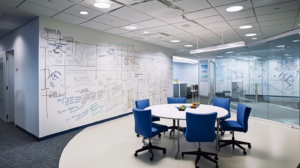Empowering Healthcare: Improving Patient Communication with Dry Erase Walls
Effective communication is a cornerstone of patient-centric care in today’s rapidly advancing healthcare landscape. This article aims to explore the transformative impact of dry erase walls on healthcare settings, elevating patient communication to unprecedented levels. We explore how these dynamic surfaces enhance patient engagement, foster understanding, and create interactive spaces that resonate with patients and medical staff.
Creating Visual Treatment Roadmaps: Navigating Complex Therapies
Dry erase walls provide an innovative solution for visually mapping treatment plans and care journeys. Medical professionals can use these walls to illustrate the step-by-step process when patients require intricate and multi-faceted therapies. This visual representation gives patients a clear roadmap, reducing anxiety and helping them navigate complex medical procedures. By using colorful markers, medical staff can emphasize different stages of the treatment journey, making it easier for patients to grasp the process.
Interactive Education: Bridging Health Literacy Gaps
Health literacy plays a pivotal role in patient outcomes. Dry erase walls serve as a bridge to improve health literacy by engagingly displaying essential health information. In waiting areas, these walls can feature educational content on preventive measures, wellness tips, and understanding medical terms. By incorporating infographics, illustrations, and simplified explanations, healthcare facilities empower patients to become more knowledgeable about their health, making informed decisions that positively impact their well-being. For instance, a pediatric clinic can use these walls to explain vaccination schedules to parents, making the information more accessible and understandable.
Enhancing Family-Caregiver Collaboration: A Holistic Approach
In healthcare, family members often play a crucial role in patient care. Dry erase walls foster enhanced collaboration by creating spaces where medical staff, patients, and their families can exchange information seamlessly. In intensive care units or patient rooms, these walls become communication hubs for care updates, medication schedules, and essential contacts. This collaborative approach ensures that patients’ families are well-informed partners in caregiving, contributing to a more holistic and patient-centered experience. These walls can also feature sections for family members to jot down their questions for the medical staff, ensuring that significant concerns are addressed during medical rounds.
Encouraging Patient Expression: From Thoughts to Words
Emotions can run high in healthcare settings, and patients may struggle to articulate their feelings verbally. Dry erase walls allow patients to express their emotions, fears, and questions through writing or drawing. In psychiatric wards or counseling spaces, patients can use these walls to communicate their thoughts without the pressure of speaking directly. This innovative approach empowers patients to open up and engage with their emotions, facilitating more effective therapeutic interactions. Furthermore, these walls can be equipped with prompts or activities encouraging patients to share their feelings, promoting emotional well-being.
A Canvas for Dementia-Friendly Spaces: Nurturing Comfort
Creating dementia-friendly spaces is a priority for healthcare facilities catering to elderly patients. Dry erase walls can be instrumental in such environments by offering personalized cues and reminders. For instance, in memory care units, these walls can display daily schedules, familiar images, and personalized messages that provide comfort and reduce confusion among patients with dementia. This thoughtful integration fosters a nurturing environment that supports patients’ cognitive well-being. Moreover, the walls can help with memory-boosting exercises and promote coherence among patients with memory issues.
Promoting Compliance through Visual Medication Schedules
Medication adherence is a critical aspect of effective healthcare management. Dry erase walls come into play by transforming medication schedules into visual and interactive displays. Medical professionals can design medication calendars directly on these walls, making it easier for patients to understand and adhere to their medication regimens. In outpatient clinics, patients can use these walls to mark off doses, ensuring they stay on track and improving their overall treatment outcomes. These walls can also include space for patients to note any side effects they experience, fostering transparent communication with their medical providers.
Facilitating Discharge Planning and Home Care
As patients transition from healthcare facilities to home care, clear instructions and follow-up care information become paramount. Dry erase walls can be instrumental in facilitating this transition. Medical staff can use these walls to illustrate post-discharge care instructions, dos and don’ts, and emergency contacts. This empowers patients to take charge of their recovery journey at home while having essential information easily accessible. To further enhance this process, these walls can provide links or QR codes to online resources that offer more detailed information, ensuring that patients have comprehensive guidance beyond the hospital environment.
Creating Healing Environments: Nature-Inspired Dry Erase Wall Designs
Integrating nature-inspired dry erase wall designs can significantly contribute to patient well-being. Research has shown that exposure to natural elements and scenic views can positively impact patient outcomes. Hospitals and clinics can use dry erase walls to incorporate calming landscapes, botanical illustrations, or serene ocean views. These designs contribute to the aesthetic appeal of healthcare spaces and create a soothing and healing environment that aids in patient recovery. These dry erase or whiteboard walls can also include inspiring quotes or messages that align with calming visual themes, promoting a sense of tranquility and positivity.
Fostering Cultural Sensitivity: Multilingual Communication Spaces
Language barriers can impede effective communication in healthcare settings with diverse patient populations. Dry erase walls can be strategically placed to provide multilingual communication spaces. These walls can feature common medical phrases, questions, and instructions in multiple languages. This approach ensures that patients from various linguistic backgrounds can access vital information, reducing misunderstandings and providing a comprehensive understanding of their health status and care instructions. To enhance cultural competence, dry erase painted walls can showcase cultural symbols, greetings, and customs that connect with diverse patient populations.
Engaging Pediatric Patients: Playful Dry Erase Activities
For pediatric patients, hospital stays can be intimidating and stressful. Dry erase walls can be transformed into interactive play spaces that engage and distract young patients. Medical facilities can create child-friendly designs, interactive games, or coloring activities on these walls, which contributes to a positive hospital experience for young patients, making their time in the healthcare environment more enjoyable and manageable. To further enhance engagement, these walls can incorporate QR codes that link to digital games or stories, providing a seamless blend of traditional and technology-driven activities.
Promoting Patient Engagement: Interactive Feedback Boards
Incorporating patient feedback is crucial for healthcare facilities to improve their services continually. Dry erase walls can be transformed into interactive feedback boards, allowing patients to share their thoughts, suggestions, and experiences. These boards can be strategically placed in waiting areas or near patient rooms, encouraging patients to provide feedback on their care journey. Patients can use dry erase markers to record their thoughts, rate their experience, and make suggestions for improvement. This gives patients a voice in their healthcare and shows the facility’s dedication to patient-centered care and continuous improvement.
Conclusion: Transforming Patient Communication and Care
Dry erase walls have emerged as a powerful tool in healthcare settings, revolutionizing how patients and medical staff interact. These versatile surfaces contribute to a more comprehensive and empathetic approach to healthcare by fostering more precise communication, enhancing understanding, and creating patient-centered spaces. As the healthcare industry undergoes continuous evolution, the use of dry erase walls serves as a testament to the industry’s commitment to providing personalized, holistic, and effective care that improves patient outcomes and experiences. Through the innovative use of dry erase painted walls, healthcare facilities are paving the way for a new era of patient-centered communication and healing, where patients are active participants in their care journey, and their voices are valued in shaping the future of healthcare.



Recent Comments